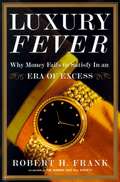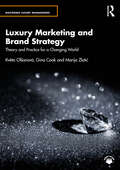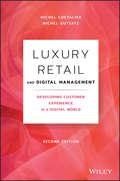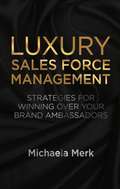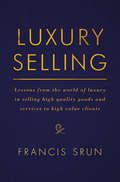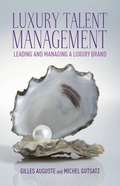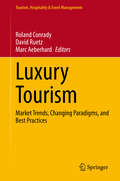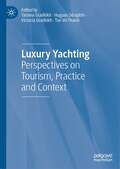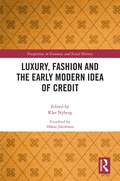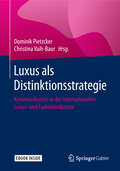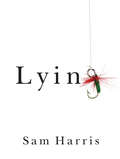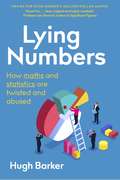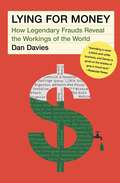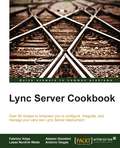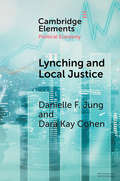- Table View
- List View
Luxury Fever
by Robert H. FrankA new luxury fever has America in its grip. Independent of stock prices, recessions, and inflation rates, the past two decades have witnessed a spectacular and uninterrupted rise in luxury consumption. Ordinary, functional goods are no longer acceptable. Our cars have gotten larger, heavier, and far more expensive. Mansions larger than 30,000 square feet no longer seem extravagant. Wristwatches for the super-rich cost tens of thousands of dollars. We are living in an era of excess. Consider: The average house built in the United States today is nearly twice as large as its counterpart from the 1950s. Even as houses have gotten more expensive and farther from the workplace, there has been a sharp increase in second-home ownership. The average price of an automobile sold in the United States now exceeds $22,000, up more than 75 percent from a decade ago. Total U.S. spending on luxury goods increased 21 percent between 1995 and 1996 (typical of recent years), while overall merchandise sales increased only 5 percent. Robert Frank caused a national debate in 1995 when he and co-author Philip Cook described the poisonous spread of "winner-take-all" markets. Now he takes a thought-provoking look at the flip side of spreading inequality: as the super-rich set the pace, everyone else spends furiously in a competitive echo of wastefulness. The costs are enormous: We spend more time at work, leaving less time for family and friends, less time for exercise. Most of us have been forced to save less and spend and borrow much more. The annual rate at which American families file for personal bankruptcy has grown to one in seventy. Budgetary pressures have reduced our willingness to fund even essential public services: Our food and water are increasingly contaminated. Potholes proliferate, and traffic delays double every ten years. Frank offers the first comprehensive and accessible summary of scientific evidence that our spending choices are not making us as happy and healthy as they could. Furthermore, he argues that human frailty is not at fault. The good news is that we can do something about it. We can make it harder for the super-rich to overspend, and capture our own competitive energy for the public good. Luxury Fever boldly offers a way to curb the excess and restore the true value of money.
Luxury Marketing and Brand Strategy: Theory and Practice for a Changing World (Mastering Luxury Management)
by Květa Olšanová Gina Cook Marija ZlatićThis text provides a comprehensive and strategic overview of luxury marketing and brand management, guiding brands to balance tradition with innovation as they navigate modern challenges and seize opportunities in a rapidly evolving global market. The book explores the core aspects of luxury branding, including the defining traits of luxury brands, the dominance of major luxury groups and the resilience of independent brands with storied histories. It explores the delicate balance required to maintain a brand’s luxury status amidst evolving consumer expectations, technological advancements and sustainability concerns. Students will gain insight into innovative marketing strategies, from the use of NFTs and blockchain to the integration of AI and the metaverse in enhancing customer experiences. Offering a clear and engaging pathway through the complexities of luxury brand management, the authors draw on their extensive academic and professional experience, presenting a rich blend of theoretical insights and real-world global and cross-industry case studies from prestigious brands like Cartier, Van Cleef & Arpels, Chanel, Ferrari, Orient-Express and many others. This textbook is designed to be the cornerstone for advanced undergraduate and postgraduate courses in luxury marketing and luxury brand management. With a focus on the latest trends and future directions in luxury marketing, Luxury Marketing and Brand Strategy is not only an academic resource but also a practical guide for navigating and succeeding in the dynamic luxury market. Online resources include PowerPoint lecture slides for each chapter, sample answers for discussion questions, and a test bank. Please visit www.routledge.com/9781032973951.
Luxury Marketing, Sustainability and Technology: The Future of Luxury Management (Routledge Studies in Luxury Management)
by Park Thaichon Sara QuachLuxury Marketing, Sustainability and Technology explores how new technologies, sustainability and relationship marketing impact and change the future of luxury brand management. Whilst the luxury industry is experiencing exponential growth, further research is vital to improve knowledge and understand how luxury management operates in the new age of marketing. Through a range of empirical and theoretical contributions, this book offers clear insights on relationship marketing and luxury management. It examines the growth of luxury, marketing strategies for luxury brands, advertising and communication of luxury brands, AI and disruptive technology in luxury marketing, and sustainability and pro-environmental luxury. All the chapters close with practical summaries and recommendations for businesses practice. This book is a useful reference for scholars and postgraduate researchers across luxury management and marketing, including those interested in international marketing, social media marketing, fashion management, as well as innovation management and sustainability.
Luxury Retail Management: How the World's Top Brands Provide Quality Product and Service Support
by Michel Gutsatz Michel ChevalierNoted experts offer invaluable insights into the glamorous world of luxury retail Luxury Retail Management is your gold-plated ticket to the glamorous world of luxury retail. Defining all the tools that are necessary to manage luxury stores, from the analysis of location and design concept, to the selection, training, and motivation of the staff, the book covers everything you need to know to enter, expand, understand, and succeed in the world of luxury retail. Reaching the luxury customer is no longer the domain of the exclusive salon—the global luxury market boom and the phenomenal growth of luxury stores now views the retail sector as key to driving brand profitability. In dealing with this rapid change, luxury brands have experienced a steep learning curve and accumulated bags of retail expertise. And while some of the luxury retail rules and models in this book are exclusive to the luxury market, many have lessons for the whole retail sector. Examines the essential aspects of luxury customer relationship management, personal sales, and the customer experience Delves into the sophisticated business models that luxury brands have developed based on a mix of directly-operated-stores and wholesale Covers the management essentials—distribution, location, design, merchandising, pricing, brand promotion, and the management agenda for success Written by respected experts Michel Chevalier and Michel Gutsatz, who lend their solid academic credentials and professional expertise to the subject, Luxury Retail Management asks and answers the questions that retail professionals need to understand in order to thrive in the luxury market.
Luxury Retail and Digital Management: Developing Customer Experience in a Digital World
by Michel Gutsatz Michel ChevalierDevelop a winning customer experience in the digital world Luxury consumers are changing – they come from all over the world, they are young and they are digital natives. How can luxury brands that have built themselves as pure physical players adapt their business model and practices to address their expectations without abandoning their luxury DNA? Luxury Retail and Digital Management, 2nd Edition sets focus on the major retailing challenges and customer evolutions luxury brands are facing today: the digitalisation and the emergence of the millennials and Chinese luxury consumers. These major changes have been affecting the distribution and communication channels of luxury brands; they now have to think simultaneously physical stores and e-commerce, global marketing and digital marketing. • Defines all the tools that are necessary to manage luxury stores including analysis of location and design concept • Explores the selection, training and motivation of the staff • Covers everything executives, managers and retail staff need to know in order to enter, expand, understand and succeed in the world of luxury retail Written by luxury retail experts Michel Chevalier and Michel Gutsatz, who lend their solid academic credentials and professional expertise to the subject, Luxury Retail and Digital Management, 2nd Edition provides deep insight into the main challenges that luxury brands are facing in this digital age.
Luxury Sales Force Management
by Michaela MerkThe sales team can often make or break the success of new brands or products. This comprehensive guide provides strategies, models and checklists to help managers and directors strengthen the relationships of their firm's sales force with their own or other brands, maximizing turnover and profit in the long run.
Luxury Selling
by Francis SrunSrun shows how the psychology of luxury brands truly plays into high value customer motivations and unlocks the potential to understand their decision processes which are unlike that of any other customer. Selling to very wealthy, demanding customers - whether you're selling luxury products or high value bespoke professional services - is a very different process to selling anything else to anyone else. Francis Srun has twenty years experience in the luxury industry, based in France, Switzerland, China and Hong Kong, most recently with Maison Boucheron. The first step is learning how to physically embody "Luxury". You need to look, speak, and move "Luxury". The true luxury attitude is not submissive nor is it hauteur - it is gentle, generous and simply, truly human. Success comes from not just being professional but from building a genuinely luxury relationship with clients. To do that you need to truly understand your client. High value customers today are younger, international in outlook and residence, and increasingly from Asia. Their buying motivation is always about self-affirmation and pleasure and never about money. The luxury customer's decision process is unlike that of other customers. While emotion is important when selling anything to anyone - with luxury selling it is paramount. Srun shows how the psychology of Brand, Product, Place, Price and Time all play a role in customer's motivations. Finally this book guides you step by step with concrete examples and useful techniques through the seven steps of luxury selling: be prepared to sell, welcome appropriately, listen genuinely, propose and present with style, meet objections with persuasion rather than refutation, conclude sharply and finally gain loyalty for a long term relationship.
Luxury Strategy In Action
by Jonas Hoffmann Ivan Coste-Mani�reWritten by experts in Luxury and Fashion Management at SKEMA Business School this exciting new book offers a new perspective that challenges the established rules of the luxury and fashion industry. The authors and contributors examine the evolution of luxury strategy and how the luxury industry is being redefined in the twenty-first century.
Luxury Talent Management
by Michel Gutsatz Gilles AugusteThe first book focusing specifically on talent management, retention and leadership in the luxury industry. It explores how to lead and manage the people this industry attracts, and the major HR challenges the industry is about to face as the previous generation of luxury pioneers retire and Asia becomes a major player in the luxury world.
Luxury Tourism: Market Trends, Changing Paradigms, and Best Practices (Tourism, Hospitality & Event Management)
by Roland Conrady David Ruetz Marc AeberhardOver the past two decades, through unprecedented levels of prosperity and changing values, luxury tourism has transformed into a new consumption pattern. This book analyzes the topic in detail with contributions from both recognized scientists and prominent executives in the luxury business. It shows how the concept of luxury has shifted from material to immaterial dimensions, and outlines new trends that will shape the luxury market in the future. The content includes carefully selected leading examples from the most important segments of the tourism market, along with concrete recommendations and best practices. Sharing unique insights, the book is a must-read for those working in the tourism industry, as well as lecturers and university students of tourism.
Luxury Yachting: Perspectives on Tourism, Practice and Context
by Tatiana Gladkikh Hugues Séraphin Victoria Gladkikh Tan Vo-ThanhThis book offers an insight into the luxury yacht industry as a provider and facilitator of a luxury yacht experience. Linked to special interest tourism (SIT), luxury yachting is an exclusive area of tourism and practice which operates in a relatively small and niche environment. Part I offers a range of academic contributions on luxury yachting from a tourism perspective. Part II provides an insight into the industry from the practitioner perspective. Part III stimulates discussions around yachting practices in different destinations. With a truly global outlook, this contributed volume enhances our understanding of a lucrative area within tourism that has so far been under-researched and under-explored.
Luxury and Fashion Marketing: The Global Perspective (Routledge Studies in Marketing)
by Satyendra SinghThe globalization of the world’s markets has forced luxury brands to, in turn, become global and accessible in many developing countries and emerging markets. As a result, the demand for these luxury products has increased globally, creating a need for an education in luxury that acknowledges the global perspective yet, at the same time, incorporates subtle regional nuances into luxury and fashion marketing. Keeping this global and regional perspective, Luxury and Fashion Marketing: The Global Perspective examines the elements of luxury marketing that contribute to superior luxury brand performance. Specifically, this volume focuses on mission statements, logos, airport retailing, franchising, challenges in luxury marketing, fashion relating to politics, environment, and beachwear, and case studies on luxury brands and emerging markets. Luxury and Fashion Marketing: The Global Perspective is unique in that it is written in a simple and engaging style to explain the theories and concepts of luxury in relation to the ordinary in the global context. Each chapter has to-do activities, making the book essential reading for students, trainers, and practitioners interested in luxury and fashion marketing and management.
Luxury the Chinese Way: New Competitive Scenarios
by Serena RovaiChina's love for luxury is not a phenomenon brought on by the contemporary luxury market, but has been a part of Chinese culture and history for generations. The Chinese luxury industry is again re-emerging along modern cultural and socio-economic contexts, and is taking the market by storm. Luxury the Chinese Way identifies the main strengths and opportunities associated with the Chinese luxury market, explains the influence of 'Chinese characteristics' on its development and mode of operations, and reflects on the challenges associated with diverse consumption orientations. Using references from the fields and real-life data, this book provides a comprehensive overview on China's innovation in luxury, and is an important contribution to the study of the phenomenon that is the global luxury industry.
Luxury, Fashion and the Early Modern Idea of Credit (Perspectives in Economic and Social History)
by Klas NybergLuxury, Fashion and the Early Modern Idea of Credit addresses how social and cultural ideas about credit and trust, in the context of fashion and trade, were affected by the growth and development of the bankruptcy institution. Luxury, fashion and social standing are intimately connected to consumption on credit. Drawing on data from the fashion trade, this fascinating edited volume shows how the concepts of credit, trust and bankruptcy changed towards the end of the early modern period (1500−1800) and in the beginning of the modern period. Focusing on Sweden, with comparative material from France and other European countries, this volume draws together emerging and established scholars from across the fields of economic history and fashion. This book is an essential read for scholars in economic history, financial history, social history and European history.
Luxury, Lies and Marketing
by Marie-Claude SicardUncovers the truth about luxury brand marketing and shows that like any other commercial brand, they manipulate and influence their customers with traditional commercial techniques. Full of case studies and practical tools for understanding luxury brand marketing the author provides frameworks to help companies with their own branding strategy
Luxus als Distinktionsstrategie: Kommunikation In Der Internationalen Luxus- Und Fashionindustrie
by Dominik Pietzcker Christina Vaih-BaurDieses Buch beleuchtet den schillernden Begriff „Luxus“ und seine verschiedenen Ausprägungen in der Modebranche aus unterschiedlichen Blickwinkeln. In 27 Beiträgen verknüpft es wissenschaftliche Analysen mit einem Überblick zu aktuellen Trends auf dem Luxusgütermarkt und den konkreten Anwendungen der Markenkommunikation im Luxussegment.Zunächst untersuchen die Autoren die Geschichte des Begriffs und die Bedeutung des Luxus in Kunst, Medien und Gesellschaft. Grundlage hierfür ist die historische Tradition des Luxusbegriffs, die bis in die Antike zurückreicht. Im zweiten Teil nehmen Vertreter der Medien-, Consulting- und Luxusbranche aus Europa und Asien in Interviews ausführlich Stellung zur Bedeutung von Luxus und Lebensstil für Konsumenten. Neben der Vermarktung von Luxusprodukten über Labels, Blogs, Online-Shops oder Premium-Kaufhäuser heben sie dabei aber auch ihre Bedeutung als Vermögensanlage heraus. So entsteht ein differenziertes Bild der aktuellen Trends auf dem Markt für Luxusgüter. Praktische Aspekte der Luxuskommunikation in Beratung, Strategie und operativer Anwendung stehen im Mittelpunkt des dritten Teils des Werkes. Der vierte und letzte Teil beschäftigt sich mit dem Phänomen der Digitalisierung und der Frage, wie diese für die Luxusmarkeninszenierung genutzt werden kannDie Beiträge zeigen anhand von Beispielen aus verschiedenen Branchen, wie erfolgreiche PR und Werbung im Luxussegment gestaltet werden kann. Im Mittelpunkt stehen konkrete Absatzstrategien und Kommunikationsmaßnahmen aus Marketingsicht und die Frage, mit welchen Medien die Endkonsumenten am ehesten erreicht werden. Die Autoren setzen sich auch mit digitaler Modekommunikation auseinander und fragen, wie sie für die Luxusmarkeninszenierung genutzt werden kann. Das Buch richtet sich an Marketingfachkräfte aus der Modebranche und anderen Luxussegmenten der Konsumgüterindustrie.
Luxusgut Wohnen
by Michael VoigtländerDieses Sachbuch beschäftigt sich mit den aktuellen Entwicklungen auf dem deutschen Immobilienmarkt. Vielfach haben Kauf- und Mietpreise schon Niveaus erreicht, die noch vor wenigen Jahren unvorstellbar waren und nun das Leben in Großstädten und begehrten Universitätsstädten immer teurer machen. Das Thema gewinnt vor diesem Hintergrund an sozialpolitischer Brisanz. Der Immobilienökonom Michael Voigtländer erläutert die wirtschaftlichen Hintergründe in allgemein verständlicher Weise und wendet sich damit an alle am Thema Interessierten. Er widmet sich unter anderem den Fragen, ob es sich um eine spekulative Blase oder einen echten Wohnungsmangel handelt und weshalb die Bautätigkeit nicht zur Nachfrage aufschließt. Wie sollte die Wohnungspolitik reagieren? Um das Gleichgewicht zwischen Angebot und Nachfrage wieder herzustellen, schlägt er zehn Maßnahmen vor, die den Markt wieder in Schwung bringen können.
Luxusgut Wohnen: Warum unsere Städte immer teurer werden und was jetzt zu tun ist
by Michael VoigtländerWohnen gilt als die neue soziale Frage. Schließlich haben Kauf- und Mietpreise schon Niveaus erreicht, die noch vor wenigen Jahren unvorstellbar waren und nun das Leben in Großstädten und begehrten Universitätsstädten immer teurer machen. Das Thema gewinnt vor diesem Hintergrund an sozialpolitischer Brisanz. Doch was hilft wirklich, um die Lage im Wohnungsmarkt wieder zu entspannen?Der Immobilienökonom Michael Voigtländer erläutert die wirtschaftlichen Hintergründe in allgemein verständlicher Weise und wendet sich damit an alle am Thema Interessierten. Er widmet sich unter anderem den Fragen, ob es sich um eine spekulative Blase oder einen echten Wohnungsmangel handelt und weshalb die Bautätigkeit nicht zur Nachfrage aufschließt. Wie sollte die Wohnungspolitik reagieren? Um das Gleichgewicht zwischen Angebot und Nachfrage wieder herzustellen, schlägt er zehn Maßnahmen vor, die den Markt wieder in Schwung bringen können.Für die 2. Auflage wurde das Werk vollständig aktualisiert, u. a. um die Themen Grundsteuerreform und Baukindergeld erweitert und mit digitalem Zusatzmaterial per App angereichert. Laden Sie einfach die Springer Nature More Media App kostenlos herunter und scannen Sie die gekennzeichneten Abbildungen im Buch, um Videos zu streamen und interaktive Grafiken abzurufen.
Lying
by Sam HarrisAs it was in Anna Karenina, Madame Bovary, and Othello, so it is in life. Most forms of private vice and public evil are kindled and sustained by lies. Acts of adultery and other personal betrayals, financial fraud, government corruption-even murder and genocide-generally require an additional moral defect: a willingness to lie.In Lying, best-selling author and neuroscientist Sam Harris argues that we can radically simplify our lives and improve society by merely telling the truth in situations where others often lie. He focuses on "white" lies-those lies we tell for the purpose of sparing people discomfort-for these are the lies that most often tempt us. And they tend to be the only lies that good people tell while imagining that they are being good in the process.
Lying Numbers: How Maths and Statistics Are Twisted and Abused
by Hugh BarkerA readily understandable exploration of how figures are badly reported or deliberately misrepresented everywhere from political arguments and briefings to business presentations and shopping offers.Praise for Hugh Barker's Million Dollar Maths:'Great fun. A clear, original and highly readable account of the curious relationship between mathematics and money.' Professor Ian Stewart - author of Significant Figures'A lively crash course in the mathematics of gambling, investing, and managing. Hugh Barker makes deep ideas fun and profitable.' William Poundstone - author of How to Predict the UnpredictablePoliticians, economists, scientists, journalists . . . all of them have been known to bend the truth and to twist the facts from time to time. But surely the numbers and statistics they rely on are cold, hard objective facts that tell the real story? Of course the truth is much murkier than that. Figures can be misinterpreted, misunderstood, misconstrued and misused in hundreds of different ways. This book takes a look at the many ways that statistical information can be badly reported or deliberately misused in all walks of life, from political arguments, to business presentations, to more local concerns such as shopping offers and utility bills. A polemical guide to how numbers are used to mislead, which is intended to help the reader through the minefield of dubious stats and lying numbers.
Lying Numbers: How Maths and Statistics Are Twisted and Abused
by Pocket Book of R Hugh BarkerA readily understandable exploration of how figures are badly reported or deliberately misrepresented everywhere from political arguments and briefings to business presentations and shopping offers.Praise for Hugh Barker's Million Dollar Maths:'Great fun. A clear, original and highly readable account of the curious relationship between mathematics and money.' Professor Ian Stewart - author of Significant Figures'A lively crash course in the mathematics of gambling, investing, and managing. Hugh Barker makes deep ideas fun and profitable.' William Poundstone - author of How to Predict the Unpredictable Politicians, economists, scientists, journalists . . . all of them have been known to bend the truth and to twist the facts from time to time. But surely the numbers and statistics they rely on are cold, hard objective facts that tell the real story? Of course the truth is much murkier than that. Figures can be misinterpreted, misunderstood, misconstrued and misused in hundreds of different ways. This book takes a look at the many ways that statistical information can be badly reported or deliberately misused in all walks of life, from political arguments, to business presentations, to more local concerns such as shopping offers and utility bills. A polemical guide to how numbers are used to mislead, which is intended to help the reader through the minefield of dubious stats and lying numbers.
Lying for Money: How Legendary Frauds Reveal the Workings of the World
by Dan DaviesAn entertaining, deeply informative explanation of how high-level financial crimes work, written &“with verve and wit&” (The Sunday Times, London) by an industry insider who&’s an expert in the field.The way most white-collar crime works is by manipulating institutional psychology. That means creating something that looks as much as possible like a normal set of transactions. The drama comes later, when it all unwinds. Financial crime seems horribly complicated, but there are only so many ways you can con someone out of what&’s theirs. In Lying for Money, veteran regulatory economist and market analyst Dan Davies tells the story of fraud through a genealogy of financial malfeasance, including: the Great Salad Oil swindle, the Pigeon King International fraud, the fictional British colony of Poyais in South America, the Boston Ladies&’ Deposit Company, the Portuguese Banknote Affair, Theranos, and the Bre-X scam. Davies brings new insights into these schemes and shows how all frauds, current and historical, belong to one of four categories (&“long firm,&” counterfeiting, control fraud, and market crimes) and operate on the same basic principles. The only elements that change are the victims, the scammers, and the terminology. Revealing some of the most famous frauds of the modern age, Davies explains how fraud has shaped the entire development of the modern world economy. For those &“who like their true-crime stories laced with economics will enjoy these forays into the dark side&” (Kirkus Reviews) this is a gripping and vivid look at modern market societies.
Lync Server Cookbook
by Fabrizio Volpe Alessio GiombiniIf you work with Lync on a daily basis or if you have to use a specific feature of Lync for a project, this is the book for you. For solutions architects, technical consultants, and administrators, if you have a Lync deployment and you want to upgrade, integrate, secure, or extend it to the cloud, you can get valuable information from the recipes in this book.
Lynching and Local Justice: Legitimacy And Accountability In Weak States (Elements in Political Economy)
by Danielle F. Jung Dara Kay CohenWhat are the social and political consequences of poor state governance and low state legitimacy? Under what conditions does lynching – lethal, extralegal group violence to punish offenses to the community – become an acceptable practice? We argue lynching emerges when neither the state nor its challengers have a monopoly over legitimate authority. When authority is contested or ambiguous, mass punishment for transgressions can emerge that is public, brutal, and requires broad participation. Using new cross-national data, we demonstrate lynching is a persistent problem in dozens of countries over the last four decades. Drawing on original survey and interview data from Haiti and South Africa, we show how lynching emerges and becomes accepted. Specifically, support for lynching most likely occurs in one of three conditions: when states fail to provide governance, when non-state actors provide social services, or when neighbors must rely on self-help.
Lyondell Chemical Company
by Stuart C. Gilson Sarah L. AbbottHit with an industry recession and the global financial crisis of 2008, in January 2009 LyondellBasell Industries AF S.C.A., one of the world's largest internationally diversified chemical companies and headquartered in The Netherlands, placed its U.S. operations and a German subsidiary under U.S. Chapter 11 bankruptcy protection. To successfully reorganize as a going concern, the company sought to raise over $8 billion in a super-priority "Debtor-in-Possession (DIP)" loan from a group of thirteen financial institutions, including commercial banks, investment banks, hedge funds, and private equity funds. Representing one of the largest DIP loans in history, this financing was considered critical to the company's survival. One unique and controversial feature of the financing was a $3.25 billion 'Roll-Up" facility, under which a number of Lyondell's pre-bankruptcy lenders were allowed to significantly elevate the priority of debts they were already owed (so that they ranked ahead of all other pre-bankruptcy debts owed by the company), provided the lenders advanced new loans to the company to help finance its restructuring. With a costly liquidation as the alternative, various creditor groups objected to the DIP financing package, putting Lyondell's reorganization, and survival as a going concern, at significant risk.
